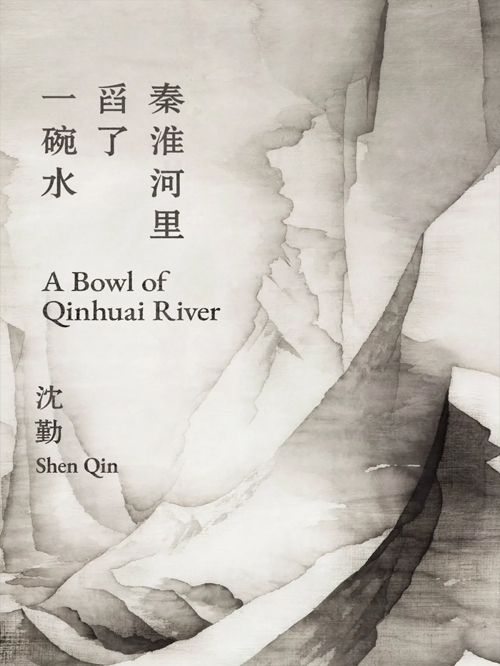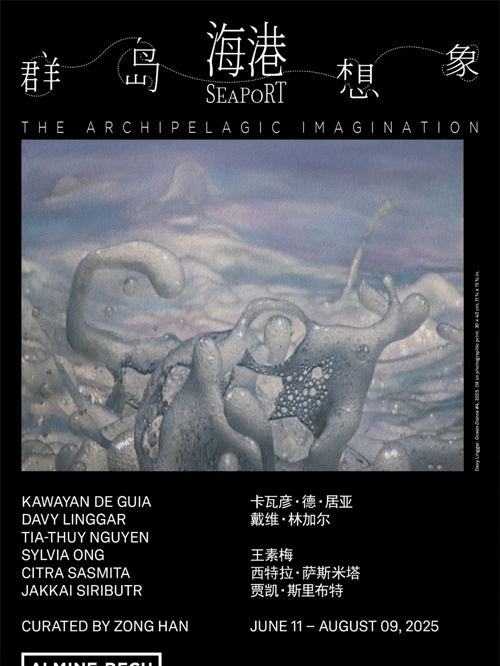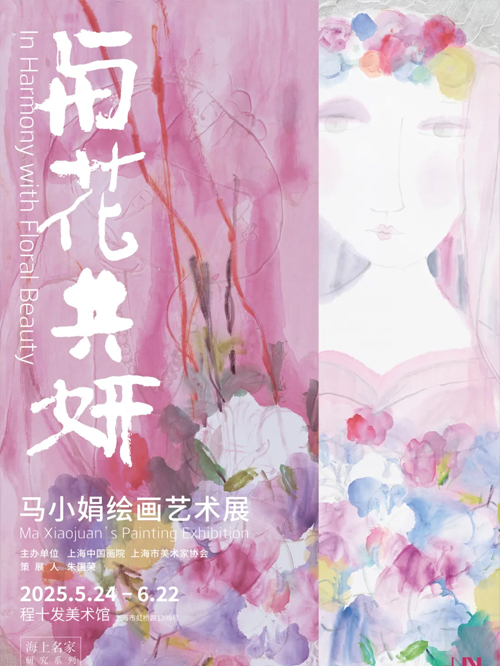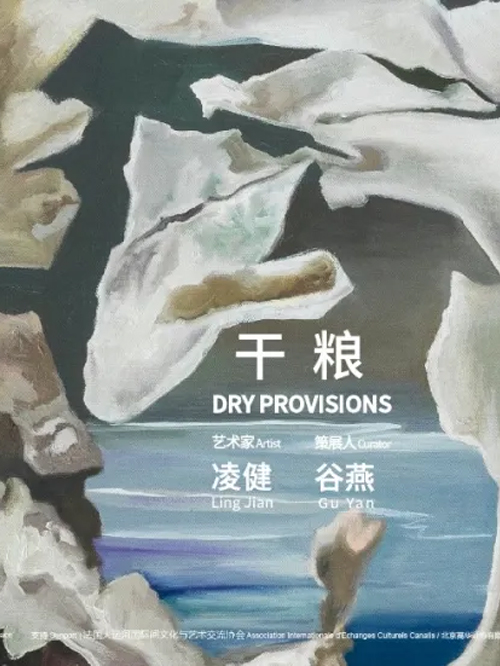亚洲艺术中心(北京)荣幸地宣布将于2024年3月23日至6月9日举办“秦淮河里舀了一碗水 • 沈勤”。艺术家沈勤近些年在苏州博物馆、南京艺术学院美术馆、湖北美术馆、广东美术馆等相继举办个展,本次展览是继2021年后再度于亚洲艺术中心举办的展览,由林书传担任策展人,呈现艺术家近年新作二十余件。
秦淮河里舀了一碗水
策展人/林书传
谈沈勤本应该绕开山山水水,却很难绕开秦淮这条河。为什么要绕开山水,因为中国的山水从来不是山水,而是一种山水观,在中国的文化语境里面,带着“观”的词汇永远说的是人。“秦淮漂客”是在沈勤工作室看见的一方闲章,句句真实,画家是南京人,画家离开过南京,画家在享受一种漂泊的状态,所以我们绕不开秦淮这条河。“秦淮河里舀了一碗水”,直白而谦逊,像熟悉的沈勤站在我们面前,说着南京话,秦淮河是他的土壤。画家不论如何以“漂客”自嘲,不那么汹涌的秦淮河,永远是漂不快,也是漂不远的。秦淮河造就了沈勤,离开秦淮河造就的还是同一个沈勤。如果将“秦淮河”放在中国文化语境之中,我们可以用“江南”来参照。从六朝开始,在文学、文人、艺术、社会等多个命题下,“江南”一词超越地理,成为了一种理想的美学与社会状态。谈艺术,“秦淮”与“江南”同脉,湿漉漉、潮唧唧,从这里经过,鼻中常会飘过不厌人的霉味。但“秦淮”却比“江南”多了几盏灯,多了几分烟火气,这便是河边的沈勤。

山(2024.1)Mountain 2024.1
176x554cm
纸本水墨 Ink on Paper
2024

山(2022.12.28)Mountain 2022.12.28
27x167cm
纸本水墨设色 Ink and color on Paper
2022
“舀走了一碗水”,是河里少了一碗水吗?我们在谈到沈勤的作品中至少要面对三种状态: 一、水被喝掉了;二、水被倒掉了;三、舀走的水又被倒回了河里,且三种状态同时存在。“水被喝掉了”,这是沈勤作品中的显性特征,是对江南文脉的一种沈式传承。笔墨锈而逼古,北山秀比南山。锈秀之间,山与山以水相叠,相交之痕似锈;锈秀之间,南人画北山却秀于南山。“水被倒掉了”,这是沈勤作品中的逃脱之术。沈勤以“术”御“艺”,为逃离方法。我们面对“秦淮河”,其实是面对一种相对稳定、经典的江南美学标尺,对于画家来说,这种标尺既是药,同样也是病。面对相对稳固的美学状态,我们只碗空空,很难舀上一碗水倒进去,却有法将河中之水舀出来。既无增之法,则为减,沈勤之“术”,便是用极端的形式来减少“法”之束缚。笔墨之法,线条之法,疏密之法,空实之法,沈勤将它们减少并控制在一个即将“变质”的临界点上,这便是他山水的独美之处。“舀走的水又被倒回了河里”,这跟沈勤的离开有关。三十年前离开南京,北上石家庄,是对生活的选择,也是被生活选择。再次回到秦淮河边,将碗中之水归还。此时的水也不是“八五”之时,泛着阳光,躺着灰尘的那碗水,此时的“秦淮河”也不是那时少了些水,却依旧桨声灯影的河。个人的离去与归来,这段经历同时折射在生活和艺术中。像沈勤画中山水之间那道突然出现的黑色线条,像画面中错笔乱书的文字,既为了补充也为了破坏而同时存在,这便是倒还这碗水时的涟漪。
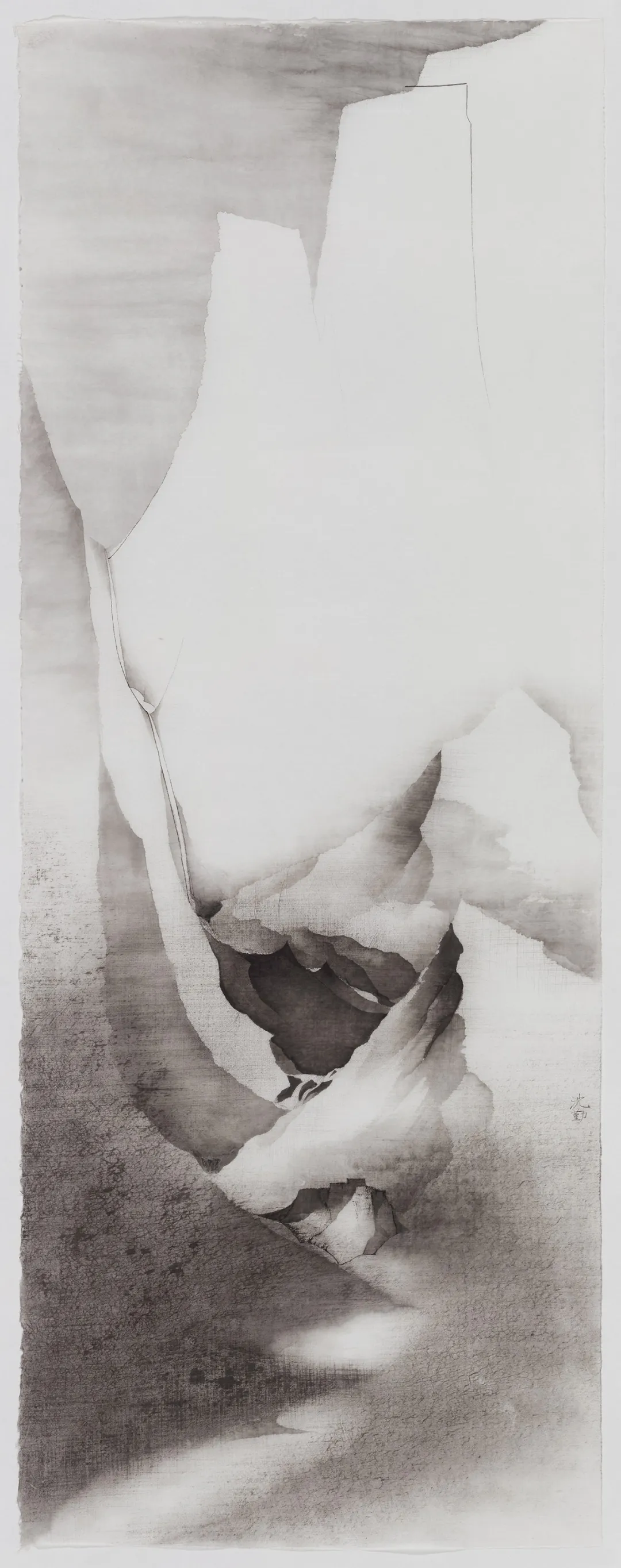
山(2023.1)Mountain 2023.1
178.5x68cm
纸本水墨 Ink on Paper
2023
就像八年前策划“三十年·沈勤”的展览那样,八年过去了再次面对这么多的作品,还是没找到用好的词汇去描绘好作品的方法。一碗水的比喻,就像沈勤有洁癖的画一样,很难让我去画蛇添足些什么。观看是一种状态,想象也是一种状态。在沈勤取水而归之间,还有一件事情是需要思考的:秦淮河有多长,多深,沈勤的碗到底有多大?
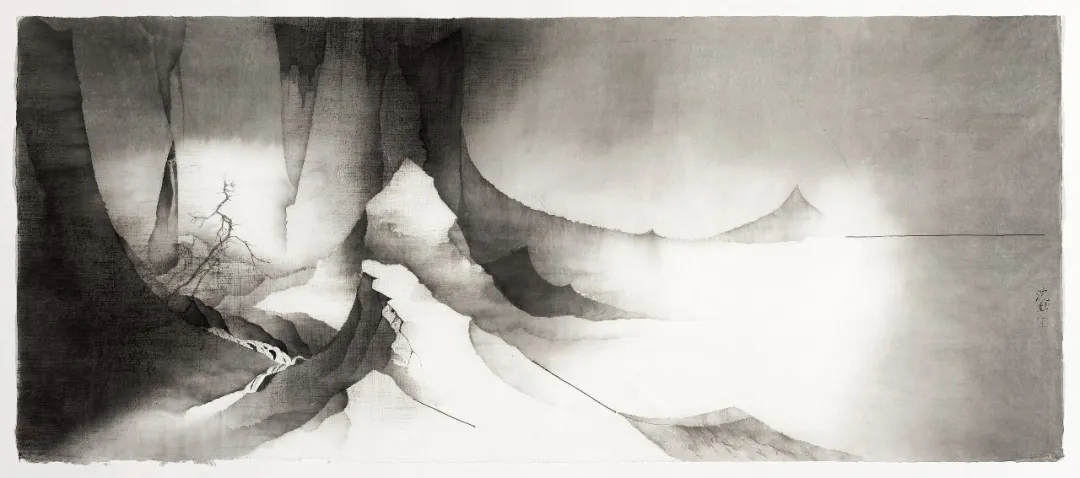
山(2022.10)Mountain 2022.10
76x178.5cm
纸本水墨 Ink on Paper
2022

山(2022.10)Mountain 2022.10 (局部)
A Bowl of Qinhuai River
Curator / Lin Shuchuan
Shen Qin should have steered clear of mountains and rivers, yet it's challenging to avoid mentioning the Qinhuai River. Why avoid mountains and rivers? Because in China, mountains and rivers are never merely natural features but present a certain way of viewing nature. In the cultural context of China, terms associated with "viewing" always pertain to people. "Drifters of the Qinhuai" is a piece of leisurely writing seen in Shen Qin's studio, every sentence rings true. The artist is a native of Nanjing, who has departed from and returned to Nanjing, enjoying a state of wandering. Hence, we cannot avoid the Qinhuai River. "A bowl of Qinhuai River," straightforward and humble, is akin to the familiar Shen Qin standing before us, speaking in Nanjing dialect. The Qinhuai River is his soil. Regardless of how the artist self-deprecatingly refers to himself as a "drifter," the relatively calm Qinhuai River will forever be neither too swift nor too distant for drifting. The Qinhuai River shaped Shen Qin, and departing from it still shaped the same Shen Qin. Placing the "Qinhuai River" within the context of Chinese culture, we can use "Jiangnan" as a reference. Since the Six Dynasties, the term "Jiangnan" has transcended geography, becoming an ideal aesthetic and social state in various themes such as literature, literati, art, and society. When discussing art, "Qinhuai" and "Jiangnan" share the same vein, damp and moist, with the familiar musty smell lingering as one passes through. However, "Qinhuai" has a few more lights and a bit more hustle and bustle than "Jiangnan," which embodies Shen Qin by the riverside.
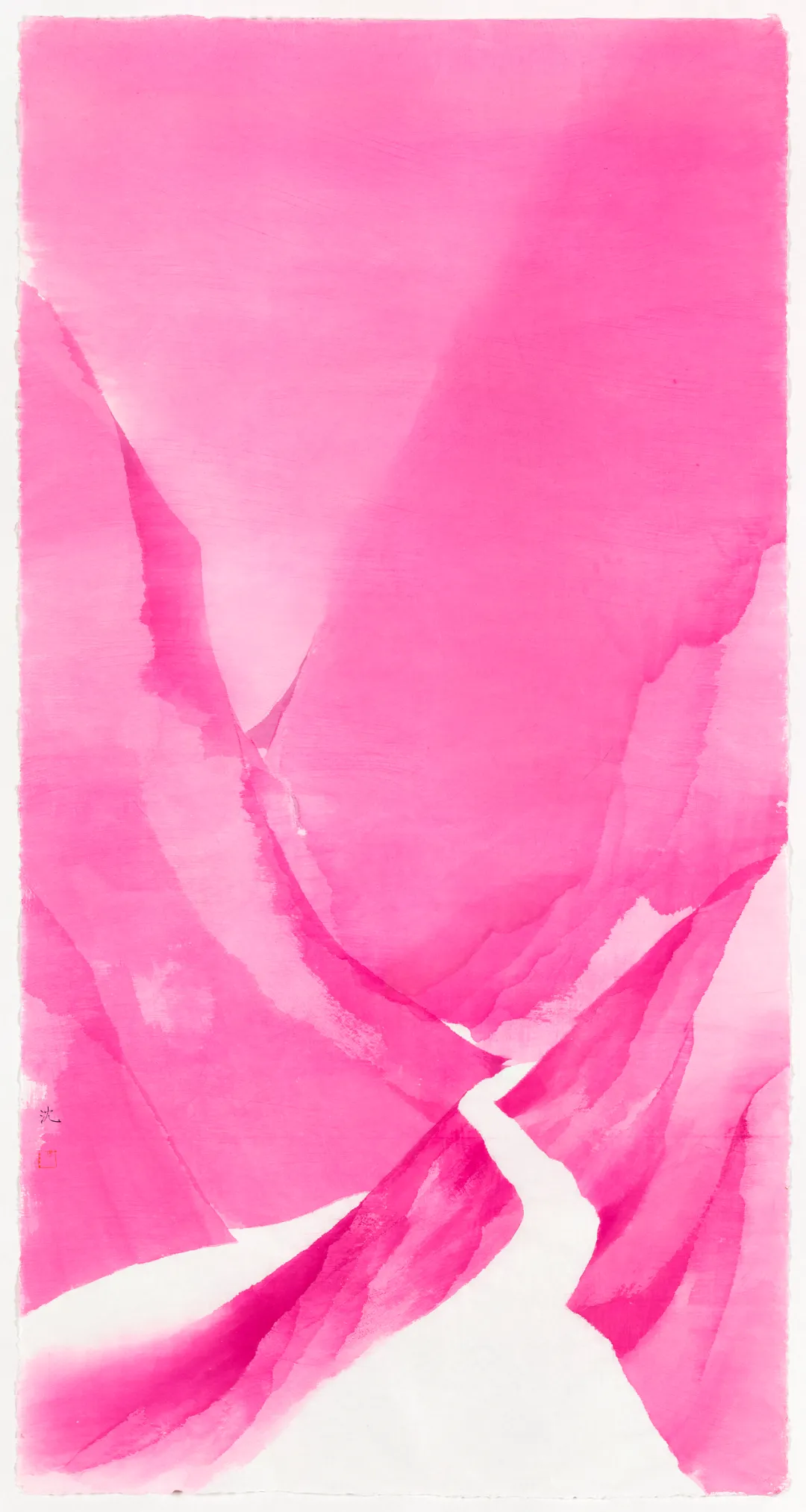
公路(2021.9)Highway 2021.9
240x126.5cm
纸本水墨设色 Ink and color on Paper
2021
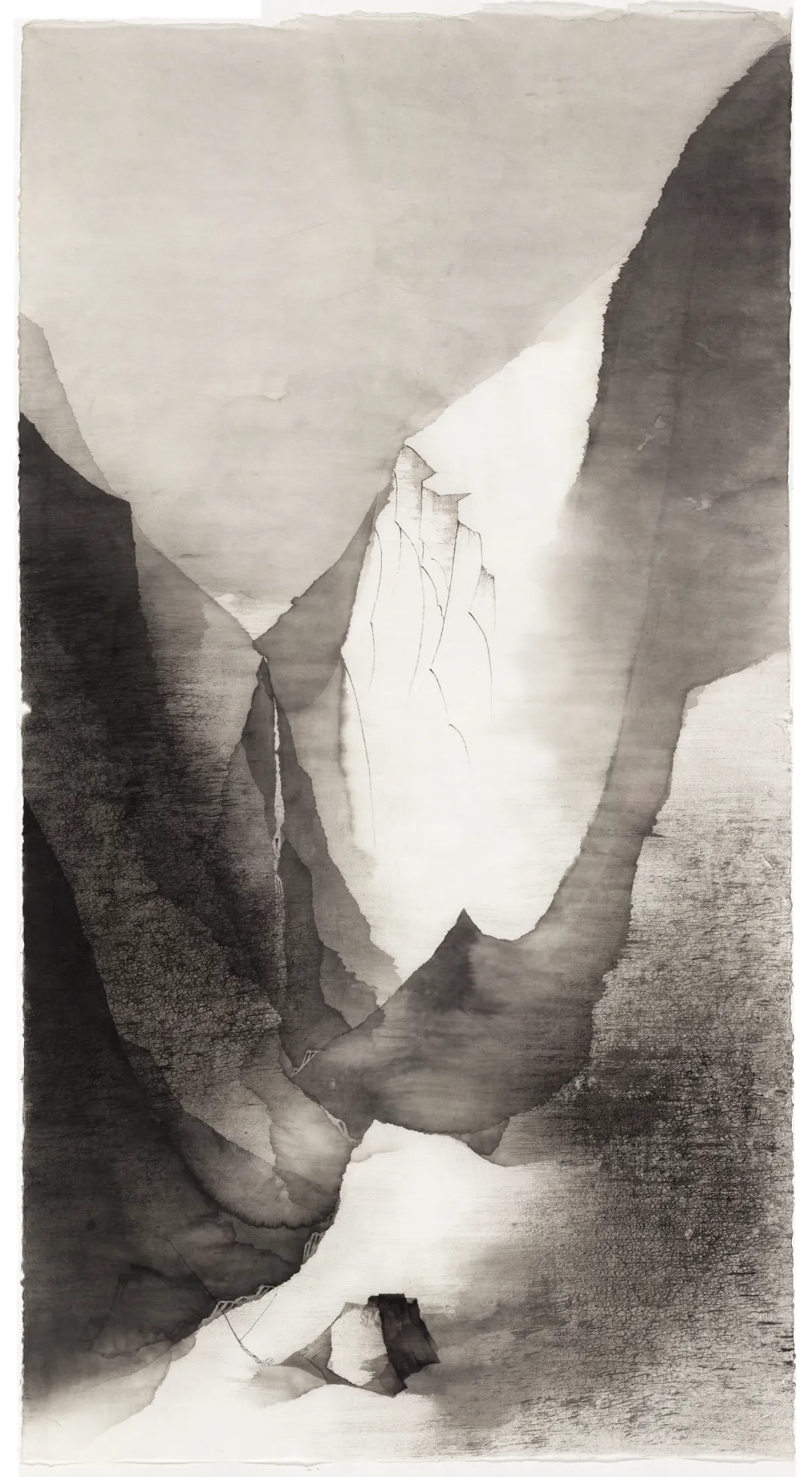
山(2022.3)Mountain 2022.3
177x96cm
纸本水墨 Ink on Paper
2022
If “a bowl of Qinhuai River”is scooped out, does it mean the river is short of a bowl of water? When discussing Shen Qin's works, we must confront at least three states: First, the water has been drunk; second, the water has been poured out; third, the scooped water has been poured back into the river, and all three states exist simultaneously. "The water has been drunk" is an explicit feature of Shen Qin's works, a Shen-style inheritance of the Jiangnan context. Ink and brush, rusty yet compellingly ancient, with the beauty of the northern mountain surpassing that of the southern. Between the rusty beauty, mountains and waters overlap, with the traces of their intersection resembling rust; amidst the rusty beauty, a southern painter portrays northern mountains yet outshines the southern. "The water has been poured out" is an escape technique in Shen Qin's works. Shen Qin uses "technique" to control "art", as a means of escape. When facing the "Qinhuai River", we are actually confronting a relatively stable and classic aesthetic criterion of Jiangnan. For the artist, this criterion is both a cure and a disease. Facing a relatively stable aesthetic state, we may find it difficult to scoop up a bowl of water to pour back in, but there is a method to scoop the water out of the river. If there is no way to add, then one must subtract. Shen Qin's "technique" is to use extreme forms to reduce the constraints of "method". The methods of ink and brush, lines, density, and space—Shen Qin reduces and controls them to a critical point of "change", which is the unique beauty of his landscapes. "The water scooped out has been poured back into the river" is related to Shen Qin's departure. Leaving Nanjing thirty years ago, heading north to Shijiazhuang, was a choice of life and also a choice made by life. Returning to the bank of the Qinhuai River, the water in the bowl is returned. At this moment, the water is not like it was in '85, reflecting sunlight, lying with dust in the bowl. Likewise, the "Qinhuai River" is not the same as it was back then, though it still echoes with the sound of oars and lanterns. The departure and return of an individual reflect in both life and art. Like the sudden appearance of black lines between the mountains and rivers in Shen Qin's paintings, like the erroneous strokes and chaotic characters on the canvas, existing simultaneously for both supplementation and destruction, these are the ripples when pouring back the water.

村(2024正月初七)Village 2024.1.7
153x507cm
纸本水墨设色 Ink and color on Paper
2024
Just as eight years ago, when curating the "30s Shen Qin" exhibition, facing so many artworks again after eight years, I still haven't found the right words to describe them properly. The metaphor of a bowl of water, much like Shen Qin's meticulously painted works, makes it difficult for me to add anything superfluous. Observation is a state, and imagination is another. Between Shen Qin scooping water and returning, there is something else to ponder: How long and how deep is the Qinhuai River, and how large is Shen Qin's bowl, after all?

村(2021.12)Village 2021.12
38.5x145.5cm
纸本水墨 Ink on Paper
2021
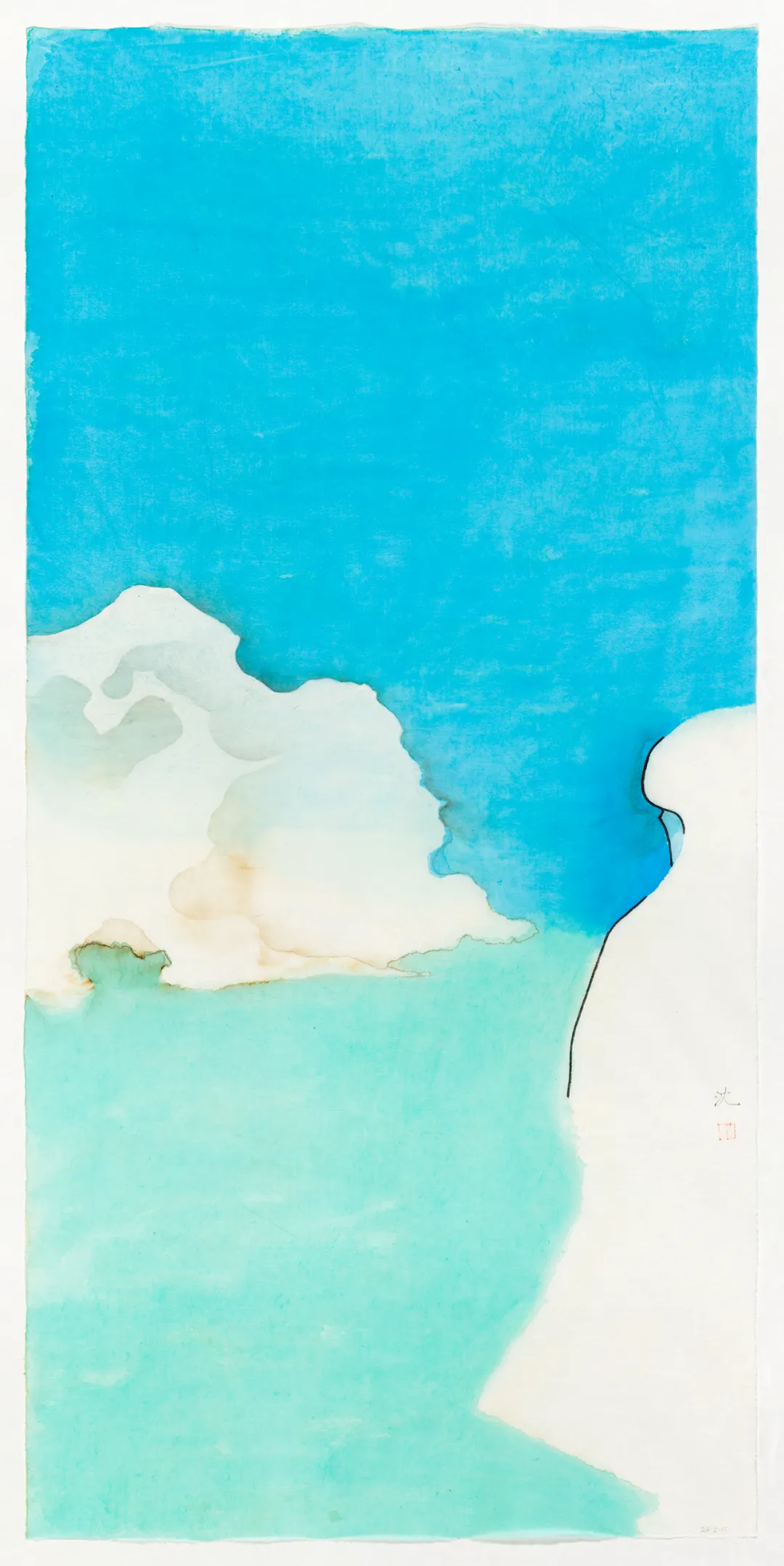
山(2024.2.15)Mountain 2024.2.15
157x76.5cm
纸本水墨设色 Ink and color on Paper
2024

沈勤,1958年出生于江苏南京,江苏省国画院国家一级美术师。1978年至 1982 年于江苏省国画院研究生班学习。“85 美术思潮”时期因其绘画创作的突出表现,被誉为水墨革新的代表之一。
重要个展:“沈勤·2023”(美术文献艺术中心,武汉,2023)、“仿宋体 - 沈勤作品展”(广东美术馆,广州, 2020)、“一意孤行 - 沈勤个展” (湖北美术馆,武汉, 2019)、“沈勤 · 文献 1989 - 2019” (美术文献艺术中心, 武汉,2019)、“‘玄 - 沈勤个展” (UNAC TOKYO,东京,日本,2018)、“空远 - 沈勤的空间”(玉衡艺术中心,上海,2017)、“叁拾年 · 沈勤个展”(南京艺术学院美术馆,南京,2016)、“隐者” (K空间,成都,2016)、“沈勤:那时·此时”(艾米李画廊,北京,2015)、“洇 • 氤 • 霪 • 滢 - 沈勤个展”(苏州博物馆,苏州,2015)、“十年 - 2014沈勤作品展”(金彩画廊,杭州,2014)、“墨· 隐· 田· 园 - 沈勤水墨画展”(石家庄当代美术馆,石家庄,2012)、“风月同天-井上有一书法、沈勤水墨展” (广州美院美术馆,广州,2011)、“净界 - 沈勤水墨艺术“(华艺廊,广州,2009)、“沈勤水墨画展” (汉堡美术馆,德国,2007)、“沈勤画展” (新北京画廊,北京,2006)、“沈勤画展”(精艺轩画廊,温哥华,2004)、“世的界-沈勤画展“ (金彩画廊,杭州, 2004)、“沈勤画展” (W画廊,温哥华,2002)、”“沈勤画展”(广州美术学院美术馆,广州,1991)、“沈勤画展” (南京艺术学院美术馆,南京,1982)
重要群展:“片石山房——沈勤 · 陈琦作品展” (亚洲艺术中心,北京,2021)、“沈勤-沈烈毅双个展“ (瀚阳画廊,杭州,2019)、“中国新水墨作品展1978-2018”(民生现代美术馆,北京,2018)、“沈勤、陈琦:零度”(亚洲艺术中心,台北,2016)、“枕流漱石 - 当代文人艺术展”(亚洲艺术中心,北京,2015)、“‘四维向度’ - 陈琦、梁铨、沈勤、朱建忠四人展”(玉衡艺术中心,上海,2015)、“沈勤 & 陈琦作品展”(亚洲艺术中心,北京,2015)、“我 1985-2015”(凤凰艺都,北京,2015)、“山外山 - 沈勤、朱建忠作品展”(玉衡艺术中心,上海,2014)、“东学西渐 - 中国当代水墨五人展”(皇家美术学院,伦敦,2014)、“墨向 · 非常态 - 中国当代水墨邀请展” (江苏省美术馆,南京,2014)、“改造水墨:新的历史观”(金陵美术馆,南京,2014)、“中国当代水墨状态 · 鸿蒙变 - 玉衡艺术中心开幕展”(玉衡艺术中心,上海,2014)、“水墨档案”(南京艺术学院美术馆,南京,2013)、“乘物游心 - 水墨展”(石家庄当代美术馆,石家庄,2013)、“第二届重塑东方美画展 - 现代生活·水墨心印”(南京艺术学院美术馆 / 上海多伦美术馆,上海,南京,2013)、“原道 - 中国当代艺术的新概念”(香港艺术中心,香港,2013)、“水墨新维度 - 2013批评家提名展”(中国美术馆,北京,2013)、“再水墨:2000 - 2012中国当代水墨邀请展”(湖北美术馆,武汉,2012)、“盒子外的空间”(不列颠哥伦比亚大学亚洲中心,温哥华,2012)、“虚薄绘画展 - 首届庄子国际会议平行展”(元典美术馆,北京,2012)、“墨变·陌生的当代 - 中国当代水墨艺术展”(关山月美术馆,深圳 / 汉堡美术馆,汉堡,2012)、“风月同天 - 井上有一书法,沈勤水墨画展”(广州美术学院美术馆,广州,2011)、 “改造历史 - 2000-2009年的中国新艺术”(国家会议中心,北京,2010)、“意派 - 世纪思维”(今日美术馆,北京,2009)、“NO · 没关系”(南京市博物馆,南京,2005)、“中国水墨实验二十年”(广东美术馆,广州,2001)、“抽象绘画联展”(汉雅轩画廊,香港,1994)、“后‘89‘中国现代艺术展”(汉雅轩画廊,香港, 1992)、 “中国现代水墨展”(世田谷美术馆,东京,日本,1990)、 “‘89中国现代艺术展”(中国美术馆,北京,1989)、“红色 · 旅 - 第二驿画展”(江苏省出版大厦, 南京,1987)、“红色·旅 - 第一驿画展”(南京艺术学院,南京,1986)、 “江苏十人中央美院邀请展”(中国美术馆,北京,1986)、“江苏青年艺术周 · 大型现代艺术展”(江苏省美术馆,南京,1985)
公共收藏:美国布鲁克林美术馆(美国)、德国汉堡美术馆(德国)、广东美术馆(广州)、苏州博物馆(苏州)、湖北美术馆(武汉)、武汉美术馆(武汉)


林书传,1986年出生于湖南衡阳。策展人,纪录片制片人,南京艺术学院美术馆副馆长。



